Learn more about CASY's technology
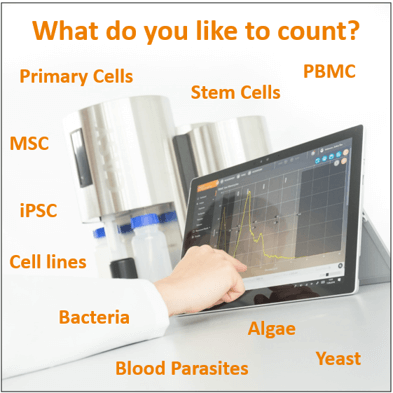
CASY is one of the most flexible counters available.
There is no need to spend much time thinking about which counter may be best for your application.
CASY – can do it all.
No compromises or tradeoffs, whether you work with cell lines or primary cells, PBMCs or stem cells, yeast or bacteria. The easily exchangeable capillaries get you ready for the future.
CASY can be equipped with up to 3 different capillaries, each optimized for a certain group of applications. Same time, switching between capillaries is easy and takes only minutes.
CASY – the principle


CASY measures the conductivity between 2 electrodes separated by a defined pore. Cells are suspended in CASYton, a defined buffer solution. During measurement, cells passing through the pore generate an electrical pulse. The intensity of the signal directly correlates with the volume of the cell. Hence CASY detects the volume of each cell passing through the pore.
For hundreds of our GMP/GLP customers we regularly recertify a consistent precision allowing a maximum variation below ±2%.
See life as it is – stain-free viability control.
CASY’s superior detection technology combining Electronic Current Exclusion (ECE) and Pulse Field Analysis (integration of cell signal at 1MHZ while passing through the pore) enable the accurate determination of viability without any influence by staining, focusing, etc.
Viable cells are detected with full cell volume as the cell membrane provides a barrier for current.
Dead cells have lost resistance from cytoplasmic membrane. Instead the much smaller volume of the nucleus is detected that can very well be distinguished.
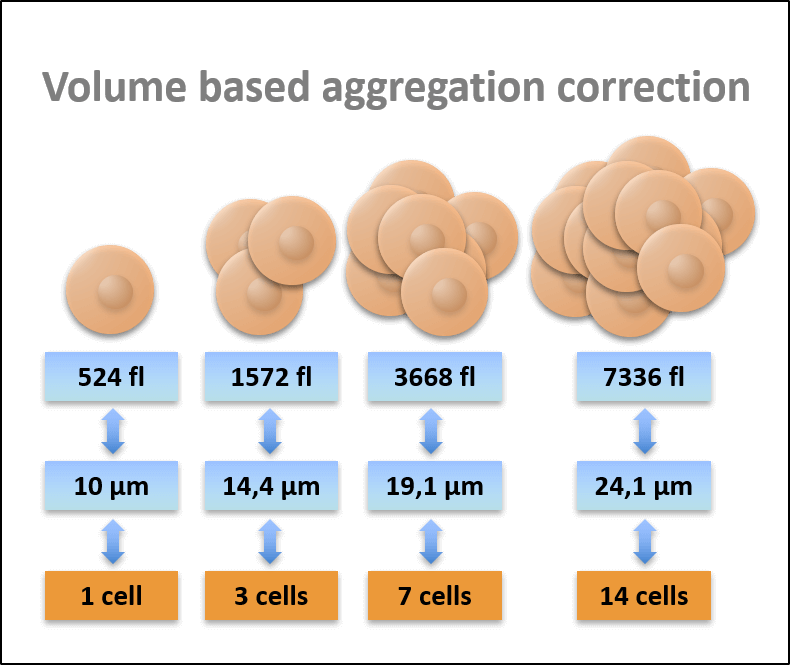
Aggregation – nothing to worry about.
As CASY determines the volume of each cell with a precision of ±2%, it does the same with aggregates. Unlike optical measurements which either ignore aggregates or try to draw some rings into rather low contrast images of them, CASY uses mathematically correct volume-based aggregation correction. Basically, CASY will see how often a single cell fits into each detected aggregate. Mean volume and size even indicate changes in the level of aggregation, for example with induced Pluripotent Stem cells (iPSC).
The only thing CASY cannot beat is statistics – CASY provides precise, accurate and reproducible results over a wide range of cell concentration. The only limit is given by statistical significance. In other words, counting only 300 cells will result in higher variation and standard deviation compared to counting more than 1.000 or even 10.000 cells per measurement. But even for very low concentrated cells, especially when they are very valuable to you or limited in amount, CASY has a solution to improve results – simply increase the measured volume to up to 3.6ml.
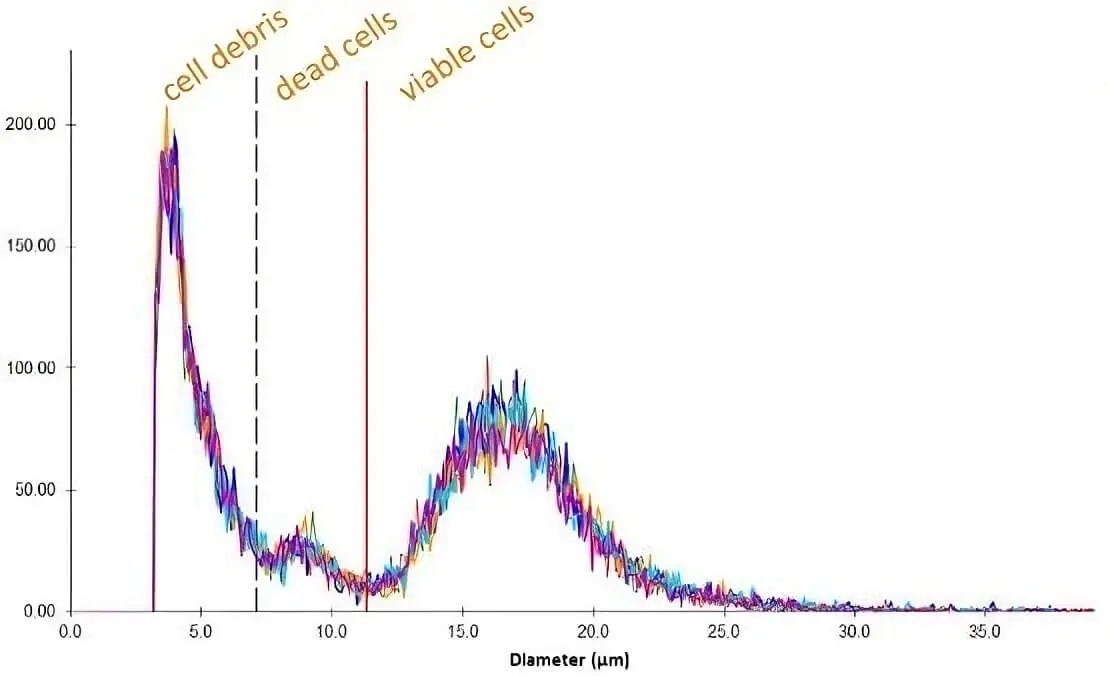
Size matters - what cell volume can tell you
CASY’s golden rule: If you haven’t changed anything, but the size distribution looks different – Pay attention: There may be something you don’t know about your cells.
CASY’s volume based cell size distribution provides much more information than merely size. It can:
- Show level of homogeneity of cells
- Identify and quantify aggregation
- Provide indication of multiple cell types in a culture
- Provide insight in the status of your cells
- Warn you in case of contaminations
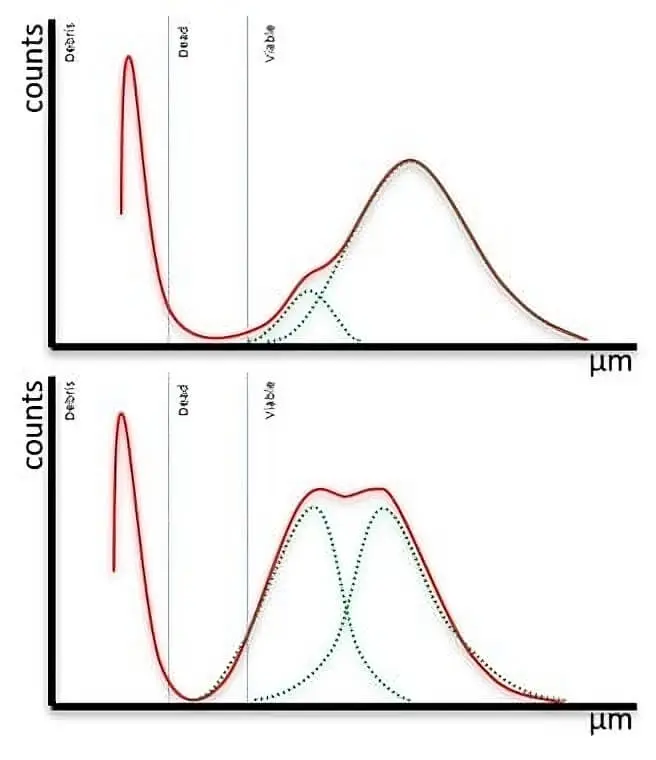
The shape of the peak shows the homogeneity of cells.
Sharp peaks represent extremely homogeneous cells like unstimulated CD4 T Cell or stem cells from cord blood.
Medium size peaks are a more common type of distribution found with many cell types including fibroblasts or lager yeast.
Finally, broad peaks are common size distributions for extremely heterogeneous cells, like mesenchymal stem cells (MSC).

Asymmetric peak shape, as seen in this figure is a result of aggregation and can be easily analyzed using CASY’s volume based aggregation correction.
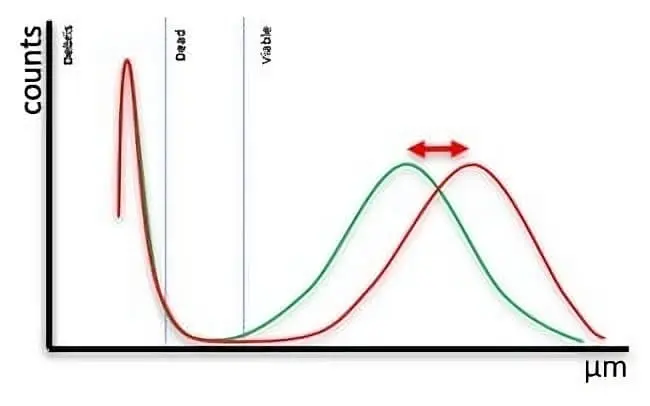
CASY Cell Counter and Analyzer is an excellent tool to identify changes in cell size extremely sensitively.
- Increasing volumes, e.g. (baculo-) virus infection or starvation
- Decreasing volumes, e.g. osmotic or effect of treatments

CASY can identify mixtures of different cell population like shown in the resulting data seen in these figures.
- Mixture of high & low concentrated cell types, e.g. contamination or unwanted differentiation with stem cells
- Mixture of equally concentrated cell types

CASY can also do things which seem impossible for other counters. It can determine contamination of media. Whenever there is a peak in a size range not expected (red), it may be the right time to measure pure media (green) to check for contamination


